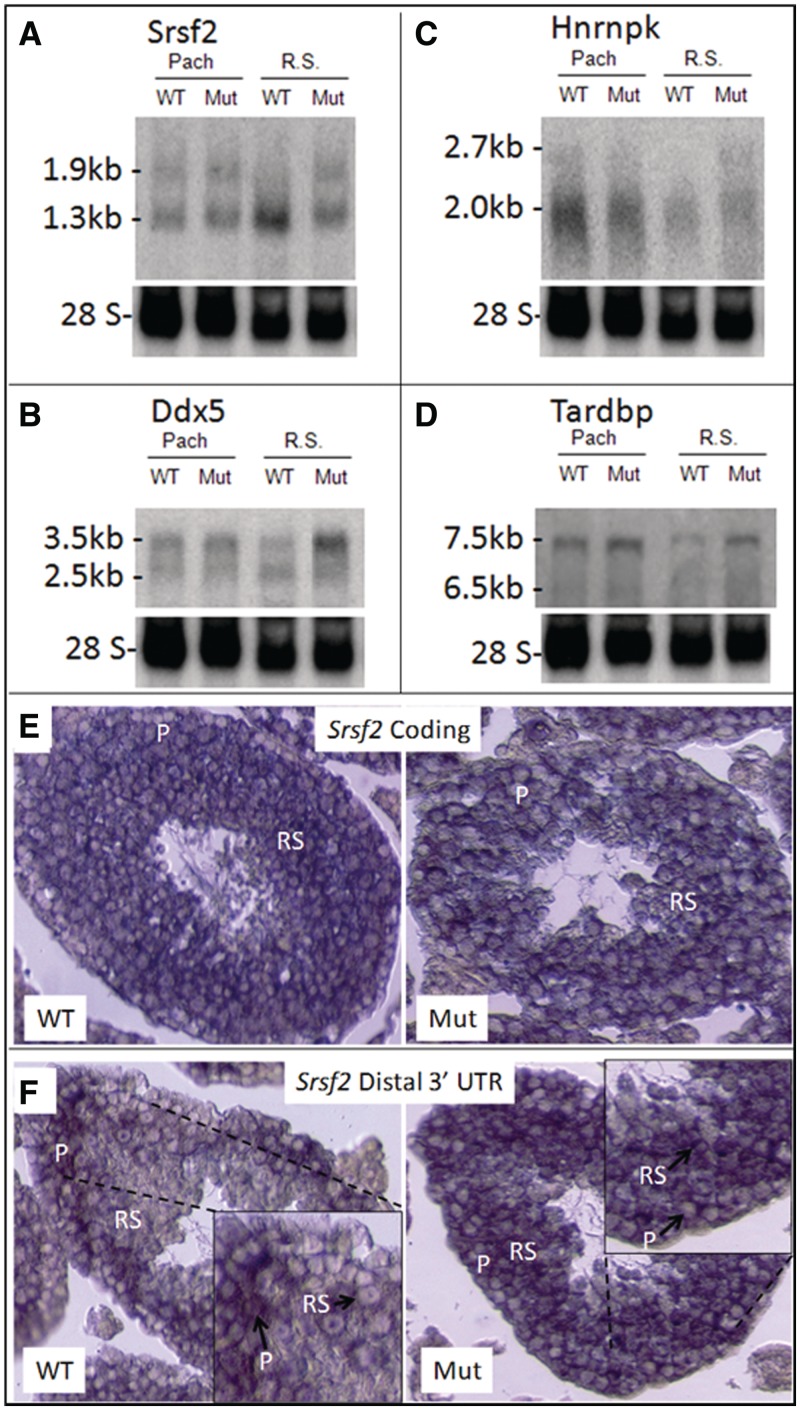Figure 3.
Loss of truncation of the 3′-UTR in mRNAs from BrdtΔBD1/ΔBD1 round spermatids. (A–D) Northern blot hybridization analysis of total RNA isolated from control and mutant pachytene spermatocytes and round spermatids. (A) Srsf2 long and short mRNA transcripts are present in control and mutant pachytene spermatocytes. mRNA expression is comparable in these two populations. Only short transcripts are present in control round spermatids, indicating that all Srsf2 transcripts have a truncated 3′-UTR in this cell type. Mutant spermatids express long and short Srsf2 transcripts and the total mRNA expression is comparable to that of the spermatocyte populations, indicating that there is a loss of truncation of some mRNAs. (B) Ddx5 long and short mRNA transcripts are present in control and mutant pachytene spermatocytes and control round spermatids. mRNA expression is similar in these three populations, but short transcripts make up a greater percentage of all Ddx5 transcripts in control spermatids. Mutant spermatids also express long and short transcripts, but the long transcript is much more abundant relative to the short as compared to control spermatids. (C) Hnrnpk is mostly expressed as short transcripts in control and mutant pachytene spermatocytes although there is some expression of long transcripts. There is a slight reduction in short transcripts in mutant spermatocytes. Control round spermatids only express short Hnrnpk transcripts, but mutant spermatids still express the long Hnrnpk transcripts. (D) The long transcript variant 1 of Tardbp is highly expressed in control pachytene spermatocytes along with lower expression of the shorter variants. In mutant pachytene spermatocytes, there is a general increase in expression of Tardbp mRNA, in particular, for the long variant 1 transcript. The same patterns of Tardbp expression are seen in control and mutant round spermatids. (E and F) In situ hybridization of adult control and mutant testicular sections with Srsf2 probes. (E) A probe to the coding region of Srsf2 hybridized in control and mutant pachytene spermatocytes (P) and control and mutant round spermatids (RSs). (F) A probe to the distal end of the Srsf2 3′-UTR hybridized in control and mutant pachytene spermatocytes, but only in mutant round spermatids. Control round spermatids do not expressed Srsf2 mRNA with a long 3′-UTR.

